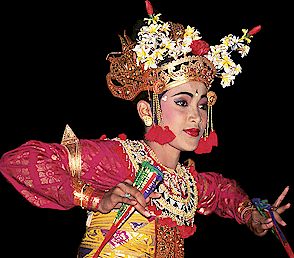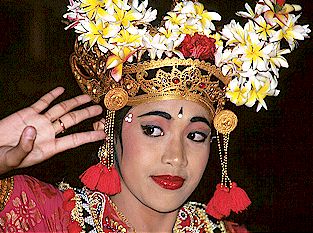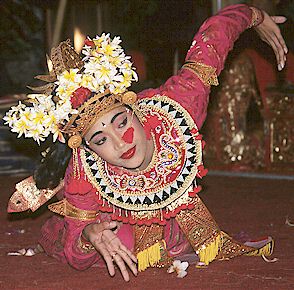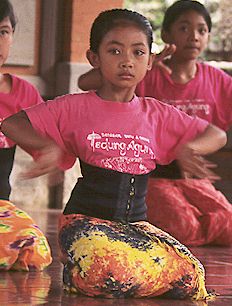|
My favorite of the Balinese Dances, the Legong is a palace dance that features the prettiest young girls. The dancers used to be (and sometimes still are) hand picked by the local prince. Gorgeous costumes and an array of eye, shoulder, hand, head, hip, and foot movements dazzle us. No part of the costume or the dancer is wasted. Flowers jiggle. Balls swing. Material sways. |



